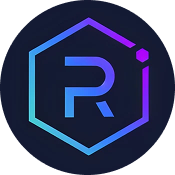In the sprawling universe of decentralized finance, two platforms emerge as pivotal players—Yearn Finance, the maestro of yield aggregation, and Avalanche, the high-speed blockchain aiming to revolutionize scalability. While Yearn simplifies the complex world of yield farming through automation, Avalanche tackles the challenge of network speed and interoperability with innovative consensus mechanisms. For crypto enthusiasts and investors, understanding these platforms' core architectures, strategic objectives, and ecosystems is essential to navigate the evolving DeFi landscape effectively.
Short on time? Jump to Yearn Finance vs Avalanche Comparison
Understanding Yearn Finance and Avalanche ?
Yearn.Finance, launched in 2020 by Andre Cronje, is a pioneer in the DeFi space, designed to optimize yield farming across multiple protocols on Ethereum and other chains. Its core function is to automatically shift funds between protocols like Aave, Curve, and Compound to maximize returns for users, a process known as profit switching. With its native token YFI, Yearn emphasizes community governance, decentralization, and continuous innovation, including the development of YearnV3 to enhance security and flexibility.
Avalanche, founded by Emin Gün Sirer and launched in 2020, offers a scalable blockchain platform capable of hosting multiple subnets and blockchains. Its architecture employs the Avalanche consensus protocol, enabling thousands of transactions per second with near-instant finality. The platform is distinguished by its focus on enterprise adoption, interoperability, and supporting a broad ecosystem of DeFi, gaming, and enterprise applications. Recent upgrades like Avalanche9000 have further enhanced its scalability, reducing deployment costs and improving cross-chain communication.
Both platforms aim to address fundamental blockchain challenges—Yearn by automating yield optimization and Avalanche by delivering high throughput and low latency. Their distinct approaches exemplify the diverse strategies within crypto: one harnessing smart contracts for financial innovation, the other pioneering network scalability and interoperability. As the DeFi ecosystem matures, understanding these differences becomes crucial for strategic investment and development.
In this comparison, we delve into their technical architectures, strategic visions, community governance, ecosystem support, and real-world applications, equipping crypto enthusiasts with a comprehensive understanding of how each platform shapes the future of decentralized finance.
Key Differences Between Yearn Finance and Avalanche
Core Functionality
- Yearn Finance: Yearn Finance operates as a yield aggregator, automating the process of optimizing returns across multiple DeFi protocols. Its vault system and profit-switching algorithms enable users to earn the highest possible yields with minimal manual intervention. The platform's primary focus is on financial strategies, liquidity management, and governance, making it a hub for yield farming innovation.
- Avalanche: Avalanche functions as a high-performance blockchain platform designed for deploying decentralized applications and enterprise solutions. Its unique consensus mechanism facilitates high throughput, low latency, and interoperability across multiple chains and subnets. Avalanche's architecture supports a broad ecosystem, including DeFi, gaming, and enterprise use cases, emphasizing scalability and customization.
Underlying Architecture
- Yearn Finance: Yearn's architecture is based on Ethereum smart contracts, with recent developments like YearnV3 introducing modular components such as the Robust Core, Smart Modules, and Periphery. These innovations aim to enhance security, decentralization, and flexibility in deploying yield strategies. The platform's governance revolves around the YFI token, enabling community proposals and voting.
- Avalanche: Avalanche employs a multi-chain architecture with three core blockchains: X-Chain, C-Chain, and P-Chain. Its Avalanche consensus protocol combines aspects of classical and Nakamoto consensus, providing high throughput and instant finality. The network supports customizable subnets, allowing enterprises to create tailored blockchains that interoperate seamlessly within the Avalanche ecosystem.
Governance Model
- Yearn Finance: Yearn's governance is driven by YFI token holders who propose and vote on platform upgrades, strategy approvals, and parameter changes. The community plays a central role in shaping the platform's development, with recent moves toward decentralizing strategy whitelisting and automating debt allocation.
- Avalanche: Avalanche features a governance system where stakeholders can participate in protocol upgrades and parameter adjustments through on-chain voting. Its decentralized model supports multiple validators and subnets, ensuring resilience and broad community involvement. Enterprise partnerships and governance are often driven by the specific needs of the subnet or application.
Ecosystem and Use Cases
- Yearn Finance: Yearn's ecosystem centers around yield farming, liquidity provision, and DeFi innovation. Its vaults and strategies serve individual investors seeking optimized returns, with ongoing developments like ERC-4626 standardization and integrations with other DeFi protocols expanding its reach.
- Avalanche: Avalanche's ecosystem spans DeFi, enterprise solutions, gaming, and NFT platforms. Its high scalability supports complex applications like tokenized assets, digital identity, and enterprise collaborations, exemplified by partnerships with J.P. Morgan, Franklin Templeton, and major sports leagues.
Security and Upgrades
- Yearn Finance: Yearn has experienced security challenges, including exploits like the 2021 DAI pool breach, but continuously updates its security protocols with initiatives like YearnV3's modular architecture. Its community-driven approach emphasizes transparency and rapid response to vulnerabilities.
- Avalanche: Avalanche emphasizes security through its consensus protocol, validator decentralization, and enterprise-grade features. Recent upgrades like Avalanche9000 and Avalanche9000 Mainnet launch have improved scalability, reduced costs, and enhanced cross-chain communication, reinforcing its reliability.
Yearn Finance vs Avalanche Comparison
| Feature | ✅ Yearn Finance | ✅ Avalanche |
|---|---|---|
| Primary Function | Automated yield aggregation across DeFi protocols | High-speed, scalable blockchain platform for dApps and enterprise |
| Consensus Mechanism | Smart contract-based algorithms on Ethereum and other chains | Avalanche consensus protocol blending classical and Nakamoto methods |
| Governance | YFI token holders propose and vote on platform changes | Stakeholders participate via on-chain voting, supporting multiple validators |
| Ecosystem Focus | DeFi yield farming, liquidity pools, and protocol integrations | DeFi, enterprise applications, gaming, NFTs, and cross-chain solutions |
| Scalability & Speed | Dependent on Ethereum and other chains; recent upgrades aim to improve efficiency | Thousand transactions per second with near-instant finality via Avalanche consensus |
| Use Cases | Optimized yield farming, governance, and DeFi innovations | Enterprise solutions, cross-chain interoperability, DeFi, and gaming |
Ideal For
Choose Yearn Finance: Investors and developers focused on yield optimization, DeFi liquidity, and community governance.
Choose Avalanche: Enterprises, developers, and users seeking scalable, interoperable blockchain infrastructure for diverse applications.
Conclusion: Yearn Finance vs Avalanche
Yearn Finance and Avalanche exemplify two distinct yet complementary pillars of the decentralized finance ecosystem. Yearn’s focus on automating yield farming and maximizing returns through clever smart contract strategies makes it a go-to platform for individual investors seeking passive income. Conversely, Avalanche’s high-performance, scalable architecture aims to underpin a new wave of decentralized applications, enterprise solutions, and cross-chain interoperability, addressing the critical challenge of scalability that underpins blockchain adoption.
For crypto enthusiasts, choosing between them depends on strategic priorities: if your interest lies in optimizing DeFi yields and community governance, Yearn provides a sophisticated, evolving platform. If scalability, enterprise integration, and multi-chain interoperability align with your goals, Avalanche offers a robust infrastructure capable of supporting complex, high-throughput applications. Both platforms push the boundaries of what blockchain technology can achieve, shaping the future of decentralized finance and beyond.






